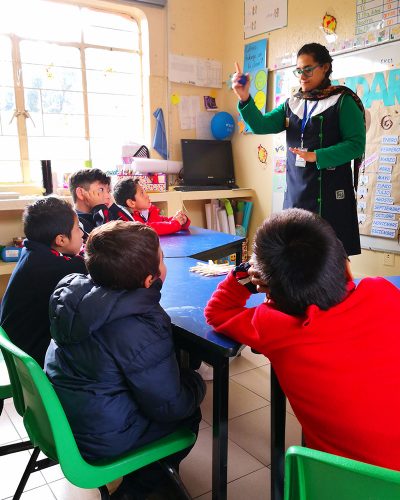I believe my child is deaf
Deafness can be detected from when your child is very young.
Observe your baby, see how they respond to sound
How to detect if a girl or boy is deaf?
- When the baby does not show attention to sounds in the environment, she does not turn around or startle at loud noises.
- She does not turn around looking for the voice of her relatives or the sound of toys.
- She doesn’t respond to mom’s voice, unless she’s in front of him.
- She doesn’t babble or starts to babble and stops.
- She does not say her first words as is common at one and a half or 2 years of age.
- He basically relies on gestures and pointing to communicate, without developing oral language.
When to start caring for a deaf child?
For a deaf child there is no time to waste, the younger they start their attention, the better their development and integration into society will be.
The deaf child needs and has the right to communicate with her parents and family as soon as possible. The optimal emotional development of the deaf child is only possible if he or she can count on a language that avoids isolation.

Disability vs Ability


There are millions of deaf people whose first language cannot be a spoken language, so they adopt alternative forms of visual communication. This leads them to develop peculiar customs and values, which tend to become traditions. This takes deaf people to identify themselves as a community. With their sign languages, the deaf form linguistic minorities. A deaf person is not a sick person: he is more of a foreigner.
“Deafness is more than a medical diagnosis, it is a cultural phenomenon in which social, emotional and linguistic patterns and problems are interrelated.”
Oliver Saks
Deaf people know of their biological condition as “non-hearing”, which is included in the definition of disability. That is why they participate in organizations that defend the rights of people with disabilities, to abolish discrimination, promote equality and full participation. But they do not build their identity around their biological condition or their disability, but rather as belonging to a linguistic minority, a community with its own cultural identity. This type of identity construction is more common for an ethnic minority and does not occur in any other group of people with other disabilities.
The sign language
What is it to be bilingual for a deaf child?
Being bilingual for a deaf child means acquiring language naturally, through their vision: Sign Language; and learn Spanish (or their country’s language) as a second language. Having two languages will always offer more resources to anyone. It is false that learning a Sign Language gets in the way of learning the oral language, research shows the opposite; a deaf child can learn to communicate in both languages at the same time, although the learning of oral language and their ability to speak will depend to a great extent on their residual hearing.


What is the Mexican Sign Language?
The Mexican Sign Language (LSM) is a complete language. It consists of visual signs with their own linguistic structure, with which deaf people in Mexico identify and express themselves. The Mexican Sign Language (LSM) is a complete language. It consists of visual signs with their own linguistic structure, with which deaf people in Mexico identify and express themselves. For the vast majority of those born deaf or that have been deaf since very early childhood, this is the language in which they articulate their thoughts and emotions, which allows them to meet their communication needs, as well as develop their cognitive abilities to the fullest while they interact with the world around them.

IPPLIAP has a Preschool, Primary and Secondary program for deaf children, based on a bilingual philosophy, in which the Mexican Sign Language (LSM) is recognized as the main way of transmitting information.
Programs and services
IPPLIAP has developed specific programs to support deaf kids and also kids with language or learning problems.

